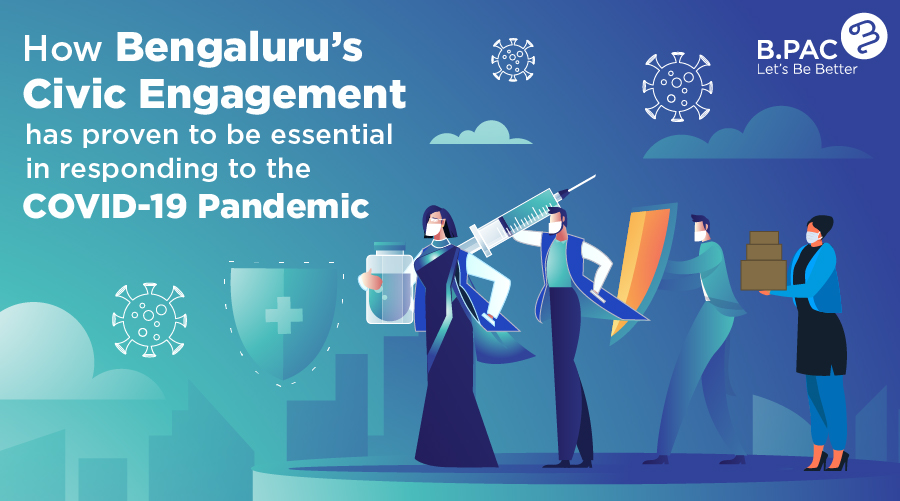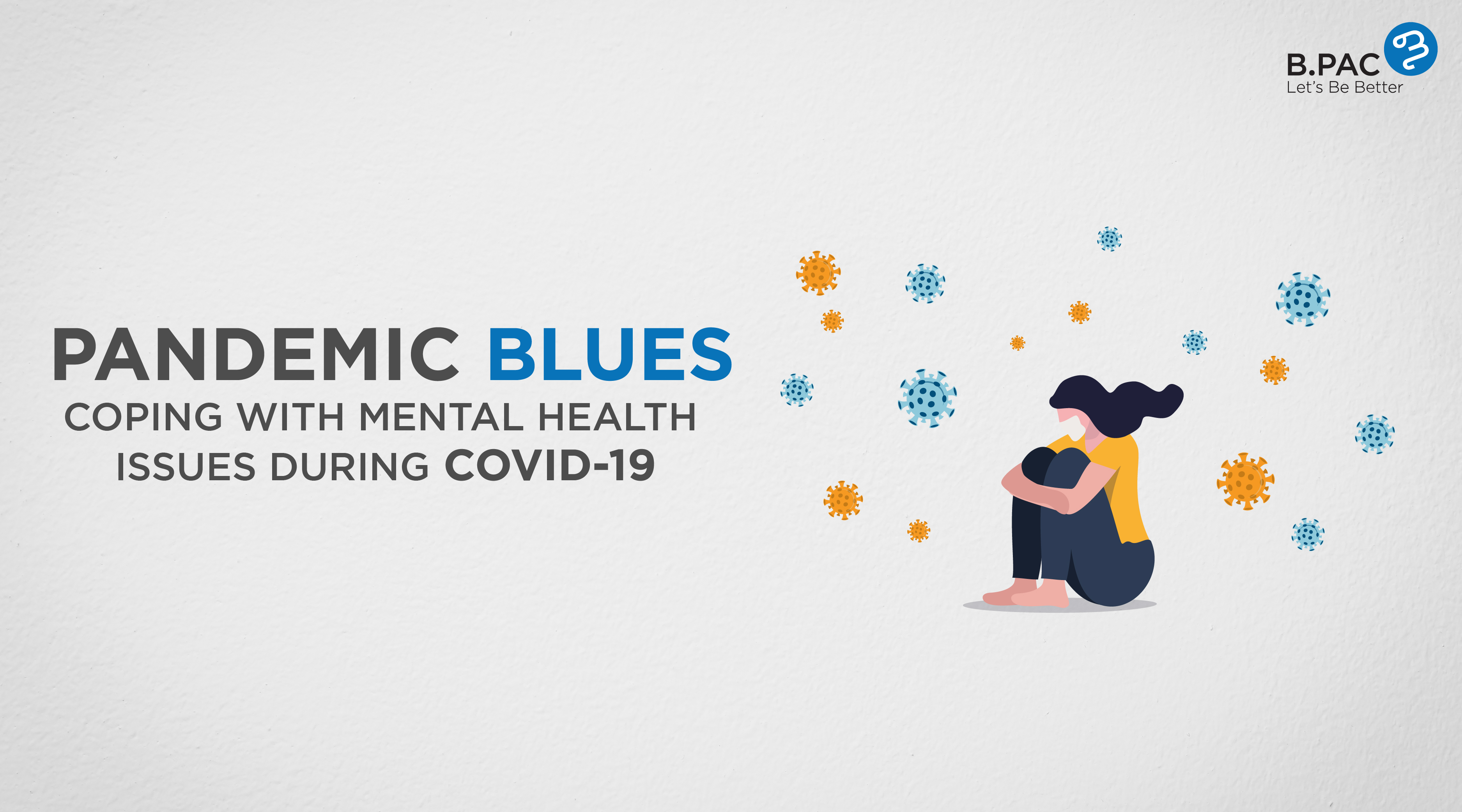The strength of a community is in the way it reacts to and deals with crises. Over the past year,
Bengaluru has proven this claim beyond any doubt.
Amid the unprecedented COVID-19 pandemic, the city saw its civilians coming together in support of each other like never before. This support came in a variety of forms, with people from all walks of life combining resources to assist vulnerable sections of society that became especially vulnerable in the grips of the pandemic. During a crisis, we often look to leaders and the government for guidance and aid, but in the case of the pandemic, the people of Bengaluru stepped up to make a difference however they could. In what has been a volatile and unpredictable year, a constant feature has been the people of the city trying their best to make an impact, whether it be simply sharing posts on social media to raise awareness about certain issues or organising large scale relief efforts for at-risk communities.
The meaningful engagement of civil society with the government
has been an important feature of Bengaluru’s public policy space over the years. During the pandemic, we saw resources being spread out to address a range of issues that changed with time and with each phase of the pandemic. As these issues changed, the needs of people shifted as well. To address this, we saw Bengaluru’s civic engagement spread its resources in order to maximise assistance for people in need. During the first wave of the pandemic, there was economic disarray as businesses were forced to shut down. This posed the most immediate threat to the lives of many, who were left without a source of income and food to fill their stomachs. In response to this, many civilian organisations and restaurant owners began food donation drives and programmes. Due to the efforts of the citizens of Bengaluru in collaboration with the government, essential grocery kits and packed meals were provided to those lower-income families who were greatly affected by the pandemic.
In the second wave of the pandemic, the most immediate issue that the citizens of Bengaluru and the country as a whole faced was the unavailability of medical resources. During the second wave, the number of COVID-19 cases was exponentially higher than during the first. Because of this, many hospitals in the city were under immense pressure. The availability of medical resources such as beds, ventilators, and blood was insufficient to deal with the number of cases. The people of the city once again came together in response to this by helping those affected access resources, with social media proving to be an important tool for this. Civic organisations and even independent citizens on their own accord did what they could to address the problem of this acute shortage of medical resources.
The need for these large-scale relief efforts saw the birth of many new organisations whose aim was to marshal people who were capable of lending a helping hand during the pandemic. One such organisation that I happened to become a part of was the Bangalore Student Community, started by a few college students from the city. As one of India’s leading metropolitan cities, Bengaluru is an attractive destination for employable men and women across the country looking to find jobs and earn a living. During the first lockdown, when businesses were forced to shut down all operations, migrant workers from states across the country were left without any income and in many cases, without a roof over their heads. This meant that in the midst of the pandemic, migrant workers had no other choice but to return to their home states as soon as possible. For this, the local government made transportation arrangements, but it involved already tired and hungry workers waiting in queues for long hours in the sun. In the city, migrants gathered at locations in order to avail arrangements for them to return to their home states and in response, capable citizens gathered as part of the Bengaluru Student Community and beyond to distribute essentials like food and water to the migrant workers.
Migrant crisis during pandemic.
It is proof that without the citizens of Bengaluru, such issues could have potentially had an even more devastating impact on the city and its populace. The way in which citizens reacted to provide relief efforts however they could is a testament to the strength of Bengaluru’s civic society and civic engagement. As a result, Bengaluru’s citizens combined resources to satiate hunger and quench the thirst of tens of thousands and provide medical resources to countless hospitals in need.
Prithvi Lamba
Political Science student at Durham University passionate about making politics a more inclusionary and approachable part of our everyday life.
The strength of a community is in the way it reacts to and deals with crises. Over the past year, Bengaluru has proven this claim beyond any doubt. Amid the unprecedented COVID-19 pandemic, the city saw its civilians coming together in support of each other like never before. This support came in a variety of forms, with people from all walks of life combining resources to assist vulnerable sections of society that became especially vulnerable in the grips of the pandemic. During a crisis, we often look to leaders and the government for guidance and aid, but in the case of the pandemic, the people of Bengaluru stepped up to make a difference however they could. In what has been a volatile and unpredictable year, a constant feature has been the people of the city trying their best to make an impact, whether it be simply sharing posts on social media to raise awareness about certain issues or organising large scale relief efforts for at-risk communities.
The meaningful engagement of civil society with the government has been an important feature of Bengaluru’s public policy space over the years. During the pandemic, we saw resources being spread out to address a range of issues that changed with time and with each phase of the pandemic. As these issues changed, the needs of people shifted as well. To address this, we saw Bengaluru’s civic engagement spread its resources in order to maximise assistance for people in need. During the first wave of the pandemic, there was economic disarray as businesses were forced to shut down. This posed the most immediate threat to the lives of many, who were left without a source of income and food to fill their stomachs. In response to this, many civilian organisations and restaurant owners began food donation drives and programmes. Due to the efforts of the citizens of Bengaluru in collaboration with the government, essential grocery kits and packed meals were provided to those lower-income families who were greatly affected by the pandemic.
In the second wave of the pandemic, the most immediate issue that the
citizens of Bengaluru and the country as a whole faced was the unavailability of medical resources.
During the second wave, the number of COVID-19 cases was exponentially higher than during the first. Because of this, many hospitals in the city were under immense pressure. The availability of medical resources such as beds, ventilators, and blood was insufficient to deal with the number of cases. The people of the city once again came together in response to this by helping those affected access resources, with social media proving to be an important tool for this. Civic organisations and even independent citizens on their own accord did what they could to address the problem of this acute shortage of medical resources.
The need for these large-scale relief efforts saw the birth of many new organisations whose aim was to marshal people who were capable of lending a helping hand during the pandemic. One such organisation that I happened to become a part of was the Bangalore Student Community, started by a few college students from the city. As one of India’s leading metropolitan cities, Bengaluru is an attractive destination for employable men and women across the country looking to find jobs and earn a living. During the first lockdown, when businesses were forced to shut down all operations, migrant workers from states across the country were left without any income and in many cases, without a roof over their heads. This meant that in the midst of the pandemic, migrant workers had no other choice but to return to their home states as soon as possible. For this, the local government made transportation arrangements, but it involved already tired and hungry workers waiting in queues for long hours in the sun. In the city, migrants gathered at locations in order to avail arrangements for them to return to their home states and in response, capable citizens gathered as part of the Bengaluru Student Community and beyond to distribute essentials like food and water to the migrant workers.
This example of the migrant crisis was just one issue that arose among a plethora of others during the pandemic. It is proof that without the citizens of Bengaluru, such issues could have potentially had an even more devastating impact on the city and its populace. The way in which citizens reacted to provide relief efforts however they could is a testament to the strength of
Bengaluru’s civic society and civic engagement.
As a result, Bengaluru’s citizens combined resources to satiate hunger and quench the thirst of tens of thousands and provide medical resources to countless hospitals in need.





